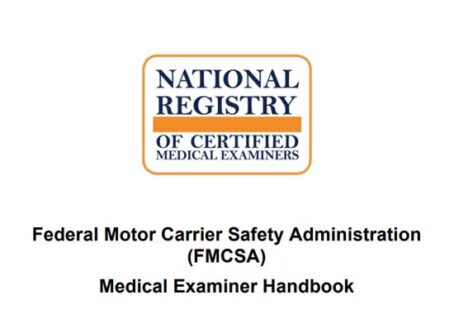Vision exemptions – navigating the alternative vision standard
With any new process, there are bound to be some speed bumps along the way. For drivers with monocular vision seeking vision exemptions, the new process implemented by the Federal Motor Carrier Safety Administration may be difficult to navigate. The following is intended to help drivers through the process.
In March, FMCSA replaced the vision exemption program with the new alternative vision standard as the means for determining an individual’s physical qualification for the exemption. Drivers who were granted an exemption under the expiring program will be required to comply with the new standards by March 22, 2023.
Drivers with vision loss in one eye are required to obtain an exemption from FMCSA in order to drive interstate commerce. The new standard was designed to reduce barriers for monocular vision individuals seeking exemption through a revamped certification process.
To qualify under the new vision standard, a driver must meet these criteria:
- Have a distant visual acuity better than 20/40 in their better eye – with or without corrective lenses – and a field of vision of at least 70 degrees in the horizontal meridian.
- Be able to recognize the color of traffic signals and devices.
- Have stable vision deficiency.
- Sufficient time has passed since the vision deficiency became stable to adapt to and compensate for the change in vision.
Under the new standard, a two-step process for physical qualification is needed for drivers seeking exemption.
The first step in the process is to have a licensed ophthalmologist or optometrist complete Form MCSA-5871. This form will determine a driver’s qualification for the exemption. The evaluation can be completed at the licensed provider of the driver’s choosing and is valid for 45 days.
The next step is to take the completed form to a certified medical examiner. The examiner will make the final determination regarding your exemption status. According to the FMCSA’s website, the medical examiner “would perform an examination and determine whether the individual meets the proposed vision standard, as well as FMCSA’s other physical qualification standards.”
FMCSA says the two-step process helps to ensure that drivers who are granted exemption meet all the necessary criteria.
“The collaborative physical qualification process in this final rule provides sufficient safeguards to ensure that only individuals who have adapted to and compensated for their vision deficiency will receive medical certification,” FMCSA final rule read.
Once granted an exemption, drivers must requalify every 12 months. Additionally, the new standard adds a requirement that monocular vision individuals be road-tested under certain circumstances.
The road test requirement applies to any driver being granted an exemption for the first time under the new standard. Employers and owner-operators are responsible for administering road tests in accordance to the typical standards. According to the FMCSA, drivers are excepted from the road test requirement “if they have three years of intrastate or specific excepted interstate (commercial motor vehicle) driving experience with the vision deficiency, hold a valid federal vision exemption, or are medically certified under 49 CFR 391.64(b).”
The Owner-Operator Independent Drivers Association supports the FMCSA’s alternative standard. According to the Association, the new standard will help more drivers obtain exemptions. This could have a positive impact in retaining qualified drivers who may have otherwise been forced out of the industry.
“In many cases, drivers with decades of experience without any at-fault crashes have to leave the profession because of the economic obstacles associated with the current monocular vision standards. The prolonged period of required intrastate driving can discourage these drivers from staying in the industry,” the Association said in a March 2021 comment to FMCSA. “We believe the proposed reforms will allow safe and experienced drivers to stay on the road.” LL









